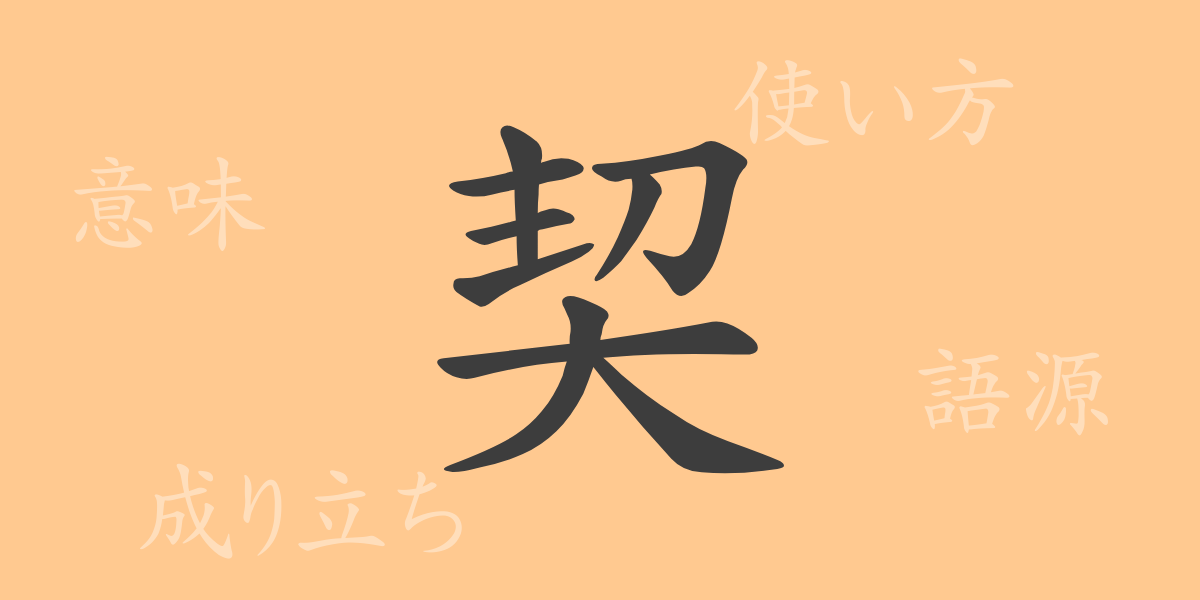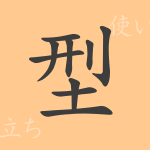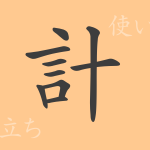The meaning of a single kanji character is deeply rooted in its form and history. The commonly used Japanese kanji “契(ちぎ.る)” is no exception. In this article, we will delve into the origins, meanings, and usage of “契(ちぎ.る),” as well as related idiomatic expressions and proverbs. By unraveling the history hidden in this frequently seen kanji in contracts, let’s explore the depth of the Japanese language.
Origin of 契(ちぎ.る) (Etymology)
The kanji “契(ちぎ.る)” originates from ancient China, and its form depicts the act of cutting “meat” with a “knife.” This act was associated with rituals for making contracts, symbolizing the mutual commitment to keeping promises. The character “契(ちぎ.る)” thus emerged from the spirit of engraving such contracts.
Meanings and Usages of 契(ちぎ.る)
“契(ちぎ.る)” is mainly used to mean “promise” or “contract.” It frequently appears in legal terms and business contexts, often referring to formal agreements such as contracts and contract terms. Additionally, it can denote promises or pledges between people.
Readings, Stroke Count, and Radical of 契(ちぎ.る)
The kanji “契(ちぎ.る)” has several readings and its usage varies depending on the context.
- Readings: The on’yomi (Chinese reading) is “ケイ,” and the kun’yomi (Japanese reading) is “ちぎ.る.”
- Stroke count: “契(ちぎ.る)” consists of 9 strokes.
- Radical: The radical is “大(だい),” meaning “large” or “great.”
Idioms, Expressions, and Proverbs Using 契(ちぎ.る)
There are many idioms, expressions, and proverbs that include “契(ちぎ.る),” each with its unique meaning and nuance. Here are a few examples:
- 契約(けいやく): A legally binding agreement.
- 契機(けいき): An opportunity or trigger for doing something.
- 契りを結ぶ(ちぎりをむすぶ): To make a promise or pledge.
- 一字千金(いちじせんきん): Literally “one character worth a thousand gold,” indicating that the value of words or writing is extremely high. “契” can sometimes be the character in question here.
Conclusion on 契(ちぎ.る)
The kanji “契(ちぎ.る)” is a crucial character symbolizing promises and contracts between people. Its usage spans from legal documents to everyday conversations. Understanding the meaning embedded in this single character can enrich one’s expression in the Japanese language.

























